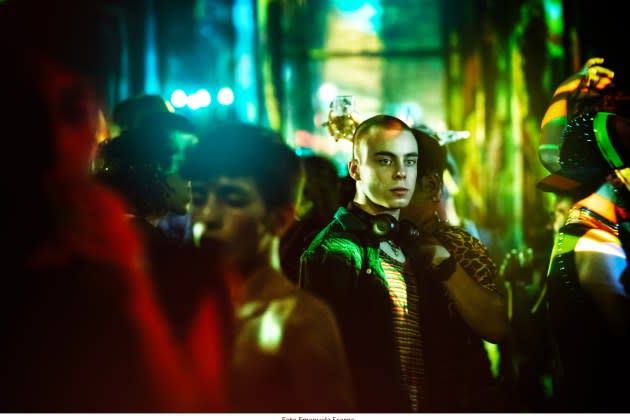‘Adagio’ Review: Stefano Sollima’s Muscular Roman Crime Drama Makes the Most of a Top Craft Team
- Oops!Something went wrong.Please try again later.

Night time in Rome. Wildfires rage on the horizon of the vast city. A blackout strikes, and block by block, the urban landscape is plunged suddenly into darkness, illuminated only by traffic and the roaring blaze in the distance. When a city’s infrastructure fails, it feels like the visible, outward sign of dysfunction or rot. What better way to plunge the audience into “Adagio,” Stefano Sollima’s crime drama dealing with cynicism and corruption, and the repercussions of past actions, as they echo through the generations? Premiering in Competition at Venice, this is a solidly assembled yarn about the on-the-ground consequences of a moral breakdown at the heart of the state, about fiddling the books while Rome burns.
The notional protagonist is 16-year old Manuel (newcomer Gianmarco Franchini), in over his head in a world he doesn’t understand. But he’s a protagonist almost entirely moved and motivated by the actions of the real power players: a mixture of ex-cons, criminals and cops, hardly any of whom can be trusted.
More from Variety
This is natural territory for Italian helmer Sollima, whose big Hollywood moment, the 2018 Benicio Del Toro starrer “Sicario: Day of the Soldado,” showed international audiences that he could handle action, having long been recognised in his homeland as the go-to guy if you want to take a trip into various gritty underworlds. His 2012 debut “A.C.A.B.: All Cops Are Bastards” and its 2015 follow-up “Suburra” form a loose thematic trilogy with “Adagio.”
Sollima reteams here with a talented selection of previous below-the-line collaborators — including DP Paolo Carnera, production designer Paki Meduri, Alessandro Borgese handling stunts, and costume designer Mariano Tufano — and there’s a sense at times that the craft of the film outstrips the screenplay. The technical proficiency and intense moodiness on display here don’t merely suggest high stakes: They insist upon it.The stakes here, the film screams at you, are vertiginous.
This tendency leaves the script — penned by Sollima and Stefano Bises, who also worked together on the well-received TV series “Gomorrah” — stuck trailing along in the background, trying to live up to what the filmmaking style promises. It sometimes feels as if the filmmaking is a gifted hype-man, selling goods he cannot then fully deliver. And perhaps that’s OK: There’s aesthetic pleasure to be gleaned from the sensation or appearance of tension and suspense, whether or not we’re experiencing the genuine, nerve-shredding article.
But without getting into too many spoilers, the various plot twists, revealing past connections or compromising situations that the characters have gotten themselves into, feel like a bit of a shrug. It’s possible to argue that in cinema, there is no such thing as small stakes: Vittorio De Sica famously proved this 75 years ago when he made one man’s struggle to track down a stolen bicycle in Rome feel like watching the fate of the universe hang in the balance. But it helps when the filmic grammar and style match the energy and content of the plot. While the craft team here feel at the top of their game, delivering scene after scene of perfectly composed glossy, grimy, sweaty tableaux, the script could have used a bit more time to sharpen up.
Still, there are some zingy, zesty sequences here that really pop. A queer rave, of the all-genders-welcome variety, is filmed with seductive vigour. A stand-off between an apparently unarmed blind guy and a man with a gun, where the odds are suddenly evened by a blackout, is neatly staged. A final showdown in a train station makes the most of its ambitious location work. If only the connective tissue between these set pieces had managed to fully develop the sinew that you’re rooting for it to acquire.
Fans of “A.C.A.B.: All Cops Are Bastards” and “Suburra” will certainly want to check in and catch up with Sollima’s latest disquisition on the decline and fall of some ancient crime legends. For the uninitiated, it’s a diverting enough picture, but isn’t necessarily the most obvious place to start. The film’s best theatrical shot is with local territories, but it will certainly pass the evening pleasantly enough for the streaming audiences for whom collaborators Sky and Netflix presumably envisaged it playing.
Best of Variety
Sign up for Variety’s Newsletter. For the latest news, follow us on Facebook, Twitter, and Instagram.
